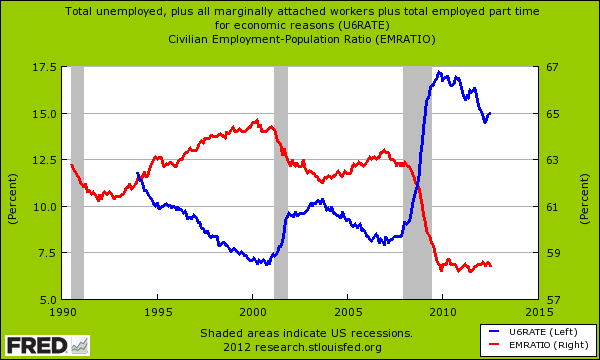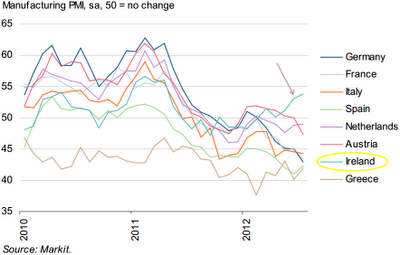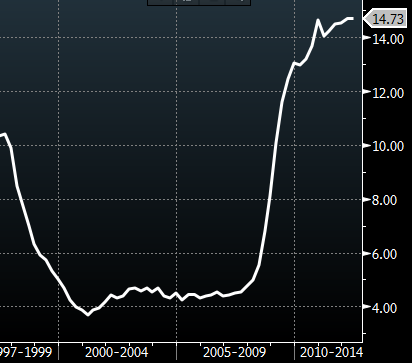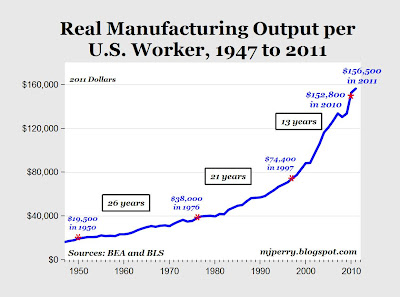August 5, 2012
Spending time examining the employment report shows continuing trends that appear beyond the headline figures. The number of Americans unemployed or marginally attached to the work-force increased to 15 percent and appears to be a new staple of our current workforce. A key data point is the civilian employment-population ratio that shows a continuing drop. The US is on a multi-decade trend where we have fewer working adults as a share of our overall population. This is not a positive trend where we have an aging population withless affluent younger workers. The headline rate is only a brief snapshot in time but the bigger trend of a shrinking middle class is all too prominent.
Looking at the underemployment rate
The underemployment rate increased to 15 percent last month:
The stock market of course took this as extremely positive news because of only examining the headline job figures (although we added 163,000 jobs the unemployment rate went up). It does make sense from a low wage capitalism view point. For example, having an excess of labor in the market allows for wages to be pushed lower. It also provides an eco-system where workers’ wages, benefits, and security can be slowly stripped away in the name of competition. Of course this logic does not apply to the financial system and large banks. Their idea of risk is sitting comfortably in an air conditioned office in Manhattan and pushing a few keystrokes. The real risk is the person launching a new technology product to market. The real risk is the person that decides to open up a restaurant. These are the true entrepreneurs and not the too big to fail banks that continually reap bailouts and subsidies.
Yet what we are seeing is this new wave of low wage capitalism. Take for example what is happening in Ireland. Ireland was one of the first countries to go overboard and collapse financially due to the economic crisis. Ireland was a booming economy and was dubbed the Celtic Tiger for all the investment flowing into the country. Yet this bubble burst with the crisis and the economy came to a screeching halt. However I’ve seen a few places where this is now heralded as the path of success. When we look at manufacturing activity it does seem to be picking up:
Ireland is the only economy above that is actually growing at the moment in the above list. However, the other side of the coin is the working class:
The Irish unemployment rate is near a peak. Profits can be increased when you can slam worker wages and capture more profits. In fact, a good portion of short-term profits have come from using the persistently high unemployment rate as cover to pay workers less. The idea that workers are less productive is simply not true. Take for example the productivity of the American worker:
American workers are much more productive today as shown by the chart above. A high unemployment rate is not good for the working and middle class. It is good for profits but this is only good if in turn it produces good paying jobs. What use is it if it gets captured and not released back into the economic system?
The current path is not one that is positive for the middle class. A high underemployment rate is showing that structurally, something is significantly changing in our economy. A low-wage system of work is developing and stripping many Americans of the opportunity to a middle class lifestyle.





No comments:
Post a Comment